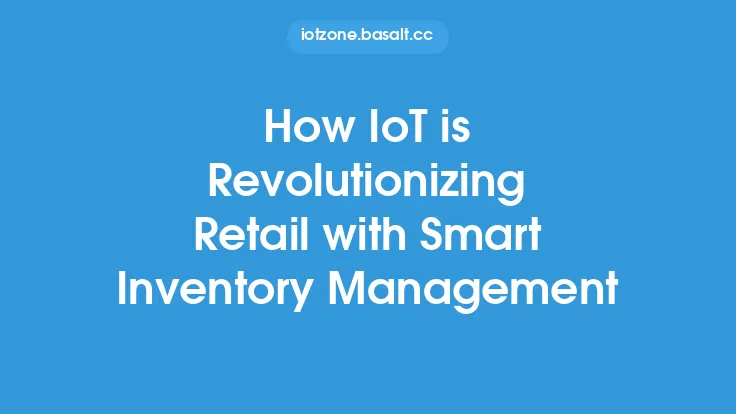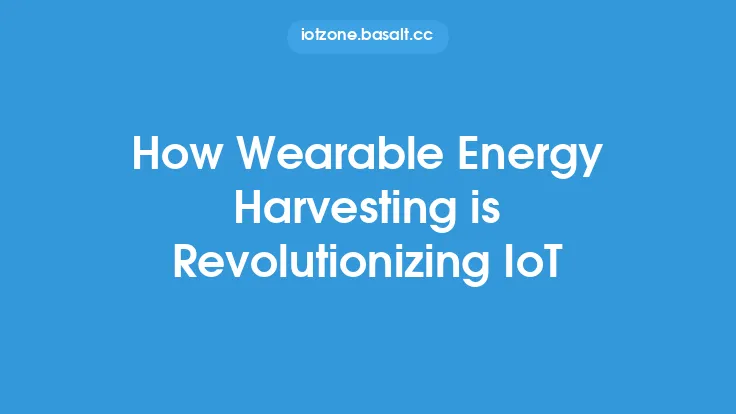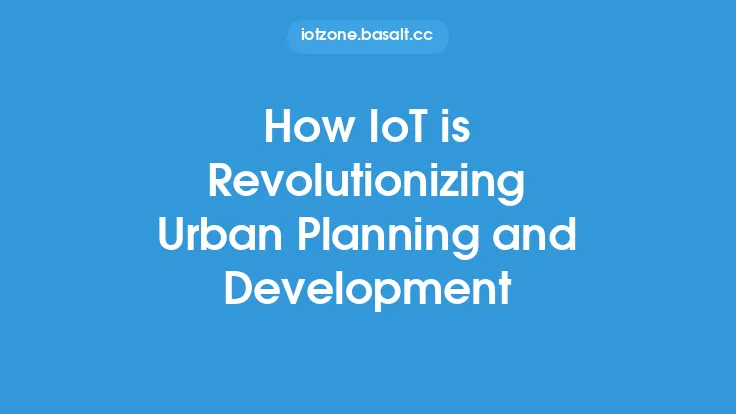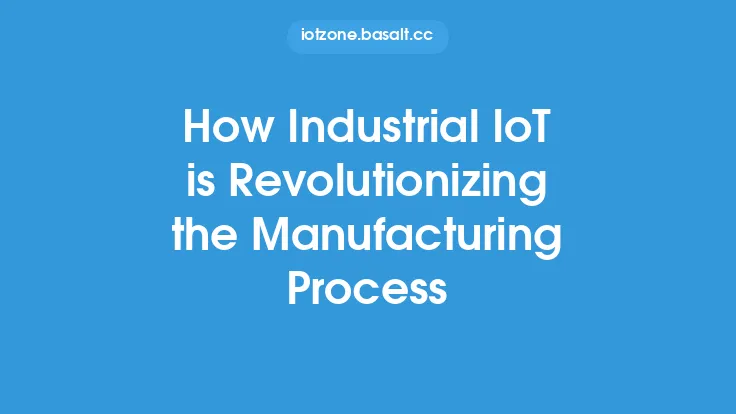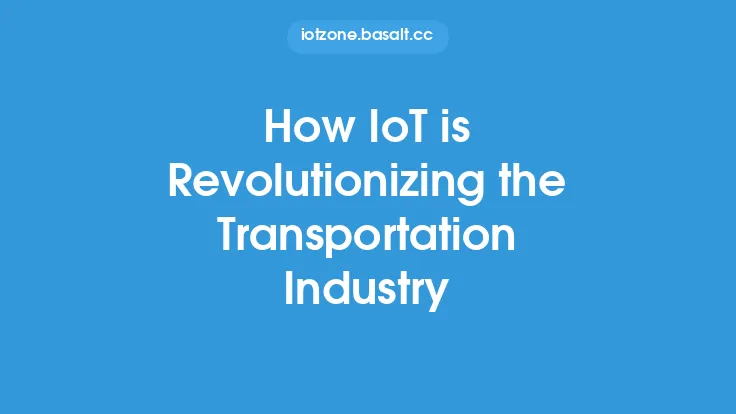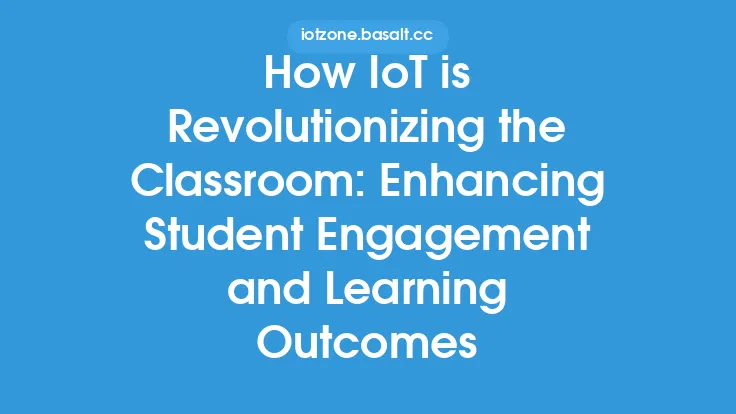The Internet of Things (IoT) has been transforming various industries, and healthcare is one of the most significant beneficiaries of this technological revolution. The integration of IoT in patient care has opened up new avenues for improving the quality of care, enhancing patient outcomes, and reducing healthcare costs. IoT-enabled devices and systems are being used to monitor patients remotely, track their health parameters, and provide personalized care. This has led to a significant shift in the way healthcare services are delivered, making them more patient-centric, efficient, and effective.
Introduction to IoT in Patient Care
IoT in patient care involves the use of connected devices, sensors, and systems to collect and analyze patient data. This data can include vital signs, medical history, and other health-related information. The collected data is then used to provide insights into patient health, enabling healthcare professionals to make informed decisions. IoT-enabled devices such as wearable sensors, implantable devices, and mobile apps are being used to monitor patients remotely, reducing the need for hospitalization and improving patient outcomes.
Benefits of IoT in Patient Care
The benefits of IoT in patient care are numerous. One of the most significant advantages is the ability to provide personalized care. IoT-enabled devices can collect data on patient behavior, preferences, and health parameters, enabling healthcare professionals to tailor care plans to individual needs. Additionally, IoT has improved patient engagement, enabling patients to take a more active role in their care. Patients can use mobile apps to track their health parameters, receive reminders, and communicate with healthcare professionals. IoT has also reduced healthcare costs by minimizing hospital readmissions, reducing lengths of stay, and improving resource allocation.
IoT-Enabled Technologies in Patient Care
Several IoT-enabled technologies are being used in patient care, including wearable sensors, implantable devices, and mobile apps. Wearable sensors such as smartwatches and fitness trackers can monitor vital signs, track physical activity, and detect falls. Implantable devices such as pacemakers and insulin pumps can monitor and regulate bodily functions. Mobile apps can track patient data, provide medication reminders, and enable communication with healthcare professionals. Other IoT-enabled technologies include telehealth platforms, electronic health records (EHRs), and medical imaging devices.
Data Analytics in IoT-Enabled Patient Care
Data analytics plays a critical role in IoT-enabled patient care. The vast amounts of data collected by IoT devices and systems must be analyzed to provide insights into patient health. Advanced analytics techniques such as machine learning and predictive analytics are being used to identify patterns, detect anomalies, and predict patient outcomes. Data analytics can also help healthcare professionals identify high-risk patients, optimize care plans, and improve patient outcomes. Additionally, data analytics can help reduce healthcare costs by identifying areas of inefficiency and optimizing resource allocation.
Security and Privacy in IoT-Enabled Patient Care
Security and privacy are critical concerns in IoT-enabled patient care. The collection and transmission of patient data must be secure to prevent unauthorized access and breaches. IoT devices and systems must be designed with security in mind, using encryption, secure authentication, and access controls. Additionally, healthcare organizations must ensure that patient data is handled in accordance with regulatory requirements such as HIPAA. Patients must also be informed about the collection and use of their data, and their consent must be obtained before data is shared or used for research purposes.
Challenges and Limitations of IoT in Patient Care
Despite the benefits of IoT in patient care, there are several challenges and limitations that must be addressed. One of the most significant challenges is interoperability, which refers to the ability of different devices and systems to communicate with each other. IoT devices and systems must be designed to work seamlessly together, sharing data and insights to provide comprehensive care. Another challenge is the lack of standardization, which can make it difficult to integrate IoT devices and systems into existing healthcare infrastructure. Additionally, there are concerns about data quality, accuracy, and reliability, which can impact the effectiveness of IoT-enabled care.
Future of IoT in Patient Care
The future of IoT in patient care is promising, with new technologies and innovations emerging every day. One of the most significant trends is the use of artificial intelligence (AI) and machine learning (ML) to analyze patient data and provide personalized care. Another trend is the use of 5G networks, which will enable faster data transmission and more reliable connectivity. The use of IoT in patient care will also become more pervasive, with more devices and systems being connected to the internet. Additionally, there will be a greater focus on patient-centered care, with IoT-enabled devices and systems being designed to meet the unique needs of individual patients.
Conclusion
In conclusion, IoT is revolutionizing patient care by providing personalized, efficient, and effective care. IoT-enabled devices and systems are being used to monitor patients remotely, track their health parameters, and provide insights into patient health. The benefits of IoT in patient care are numerous, including improved patient outcomes, reduced healthcare costs, and enhanced patient engagement. However, there are also challenges and limitations that must be addressed, including interoperability, standardization, and data quality. As IoT continues to evolve and improve, it is likely to play an increasingly important role in patient care, enabling healthcare professionals to provide high-quality, patient-centered care.
